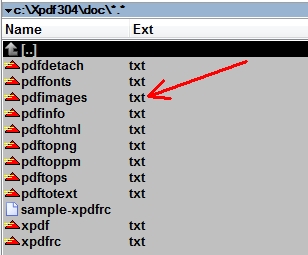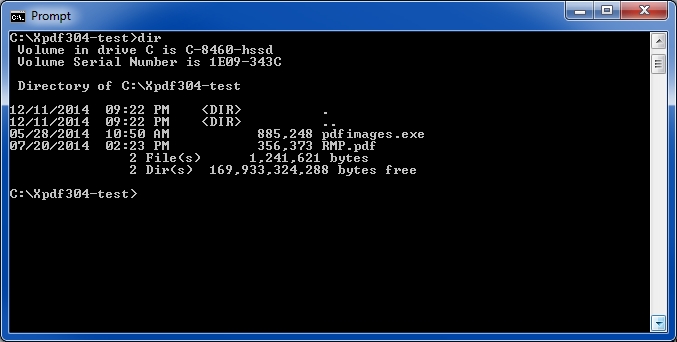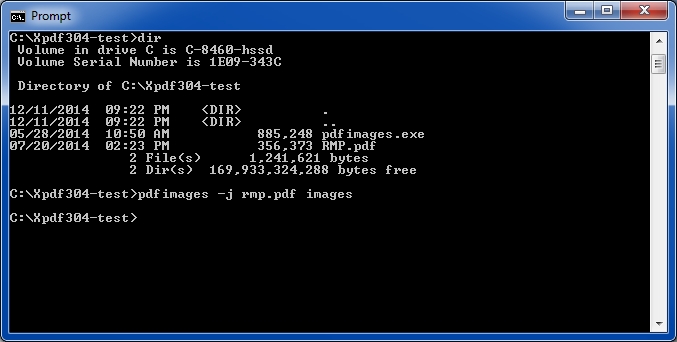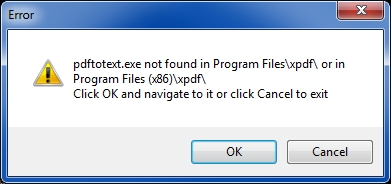1. Download and install the software.
You may have already downloaded and installed the Xpdf tools while watching the
first video in the Xpdf series, but if you haven't, then visit the Xpdf website at:
http://www.foolabs.com/xpdf/
Click the Download link and then click the pre-compiled Windows binary ZIP archive to download the Xpdf utilities for Windows.
![precompiled binaries]()
2. Locate the documentation folder for the Xpdf utilities.
Go to the folder where you unzipped the downloaded ZIP file and find the <doc> folder.
![documentation folder]()
3. Read the documentation for the PDFimages tool.
Go into the <doc> folder and find the plain text file called <pdfimages.txt>.
Open it with any text editor, such as Notepad, and read it. This is the documentation for the PDFimages tool.
![read me]()
4. Set up a test folder.
Create a test folder.
Copy <pdfimages.exe> from the unzipped <bin32> folder into your test folder.
Copy a sample PDF file into your test folder (in the video and the screenshots below, the file is called <RMP.pdf>).
![test folder]()
5. Set up a command prompt for testing.
Open a command prompt window.
Navigate to your test folder.
Issue a DIR command in the command prompt to be sure that only two files are in it - the PDFimages executable and the sample PDF file.
![cmd prompt dir]()
6. Run the PDFimages utility on the sample PDF file.
In the command prompt window, enter the following command:
pdfimages -j samplefilename.pdf images
![command line]()
7. Display the image files that were created.
Issue a DIR command in the command prompt to show that the image files were created. There should be one image file for each image in the PDF file.
![cmd prompt dir 2]()
8. Verify that proper JPG image files were created.
Using whatever photo viewing software you prefer, such as Paint or Picture Manager, open up a few of the JPG image files to verify that they were created properly.
![verify images]()
That's it! If you find this video to be helpful, please click the
thumbs-up icon below. Thank you for watching!
















